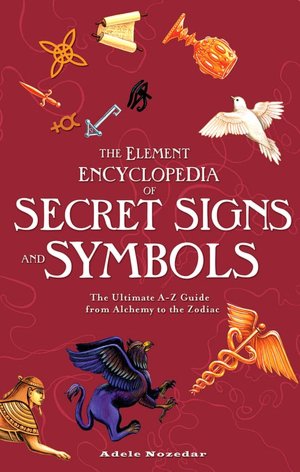"He who fails to plan is planning to fail."
~Winston Churchill
Good Ev'ning Beardies,
I apologize in advance for my lack of posts the last couple of days, but as Steinbeck once said, "the best laid plans of mice and men often go awry."
Writing stories is much like following a recipe while baking. There are specific ingredients that need to be acquired and certain steps that need to be followed in order to
get the cake to rise properly. Sometimes experienced chefs can stray from the outlined recipe and create a masterpiece, but they must practice first with following enough of them to the tee in order to warrant the dissension.
Plotting isn't rocket science, but the task is not an easy one either. When you plot your story, you are in essence deciding on how you will showcase the events to the reader as they unfold. Think of a play or a movie, and then think of the scenes within either. What happens in each scene? Who are the characters in the scene, how do they interact with one another (perhaps they don't), and how do they propel the scene to the next?
A successful plot-line includes specific ingredients that are carefully mixed together: clever and believable characters, masterfully woven dialogue, perfectly placed action, and--in my humble opinion-vivid and streamline description of the characters and their surroundings without overwhelming the character. And amongst the other ingredients of plotting is one we've all heard about throughout our schooling--writer or not.
The infamous hook.
As much as I love description in fiction, too much of it without reason is a burden the reader will choose not to bear. Too much description--especially the purely prosaic type--at the forefront of your story will bore your reader, and they will quickly lose interest. As an author, it is your duty to lure your readers--to tempt them to turn yet another page, and another--into the depths of your book until it is too late for them to turn back ;) Personally, I like to lead my stories off with a bang, which warrants the reader turning the page to find out what happens next. Action, however, doesn't have to be a stereotypical high-speed chase or a hostage situation (I'm not saying it can't be, though); action simply means an impetus that alludes to an obstacle or conflict whose theme will perpetuate throughout the plot-line. How did your character(s) arrive at said obstacle/conflict? And what drives the reader to turn more pages: How will the character(s) overcome said obstacle/conflict? Which brings me to the our next ingredient...
Conflict & Side plots.
Once you've hooked your reader--with a strong line and a barbed hook, hopefully--you must increase the tension in your plot by adding yet more conflict. Additional conflict for your character(s) to overcome may simply be an inner struggle, it may be conflict between characters, or it may be another obstacle to overcome.
With each introduction of conflict, there must come at least a partial resolution; and inversely, with each partial resolution, there must come another, more challenging conflict, building the tension to a major climactic scene.
Of course, however, there should be other
happenings in the plot-line aside from the minor and major obstacles. The other
happenings provide a good source of side plots within the plot--family occurrences and interactions, social happenings and responsibilities, romantic intrigues, et cetera--yet none of them should overpower the main conflict within the story.
{Side note: Even though it should still never overpower, introducing another major conflict into the plot-line, which will eventually become main conflicts for subsequent books within a series, allows for some lenience as to how close a sub-plot can come to outshining (or overshadowing) the main conflict of the current story.}
Climax.
It is often a struggle with most beginner writers to develop an acceptable climax. A writer may know from the point at which the idea for the story formulates in their head what the outcome of the story may be, but many forget to plot out the details of the actual outcome and the obstacles that lead up to that point.
The pay-off must not be contrived, and the build-up must be believable, set up by the many other events and choices that occurred in the prior pages. But it's more than just a great showdown scene between the protagonist and antagonist, and it is necessary to take the proper steps so that your audience isn't blindsided by the climax, wondering where it came from or if it were even warranted.
Resolution.
As a writer you must also think of all possible outcomes for the resolution, and you must set up the obstacles ever so cleverly so that the resolution you choose is the only plausible one. Otherwise, your readers will feel cheated and misled.
Simply throwing "The End" or "They lived happily ever after" just doesn't cut it.
Characters.
While Superman may seem entirely invincible on the surface, he still has his weaknesses. It is important to show the strengths and weaknesses of all your characters, creating a multifaceted, true-to-life representation of human in everyday life.
Introducing strong (as in well-written) leading characters during your 'hook' will draw your readers to your characters much more quickly (if not immediately), but in the end, it is the characters themselves and how they respond/solve/fail at overcoming their obstacle(s) that will captivate your audience long after that last page has been turned and read.
I hope this helps your writing process; I know it has helped mine.
Happy Scribing,

P.S. I always plot on 4"x6" index cards that are ruled on only one side. I use the ruled side for writing out the scenes, and the blank side for jotting notes, such as characters, POV, scene conflict, and scene resolution (if applicable).
 edera helix. For those of you who don't know, that's the Scientific name of the plant species more commonly known as—wait for it—Common Ivy. Though it's native to most of Europe and western Asia, its foliage is ever-present in the English landscape, which gives it another of its common names: English Ivy.
edera helix. For those of you who don't know, that's the Scientific name of the plant species more commonly known as—wait for it—Common Ivy. Though it's native to most of Europe and western Asia, its foliage is ever-present in the English landscape, which gives it another of its common names: English Ivy.







